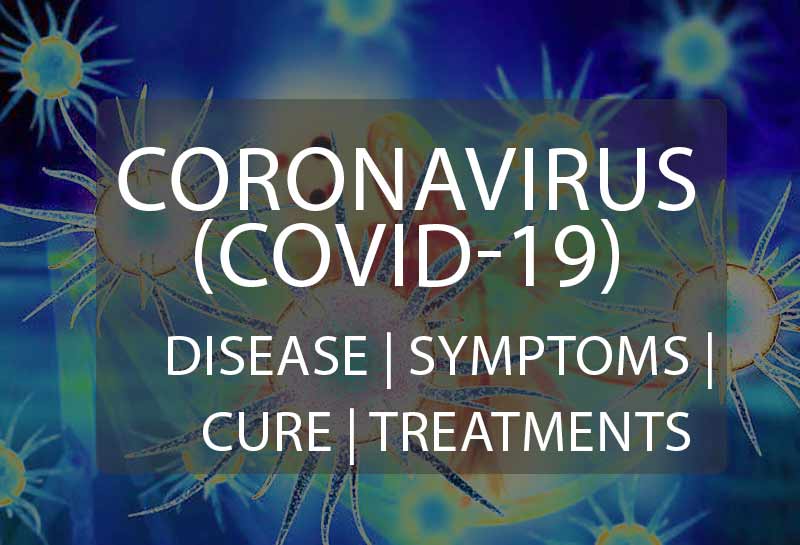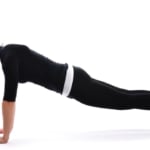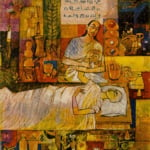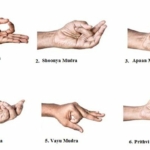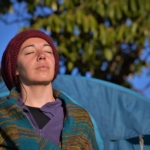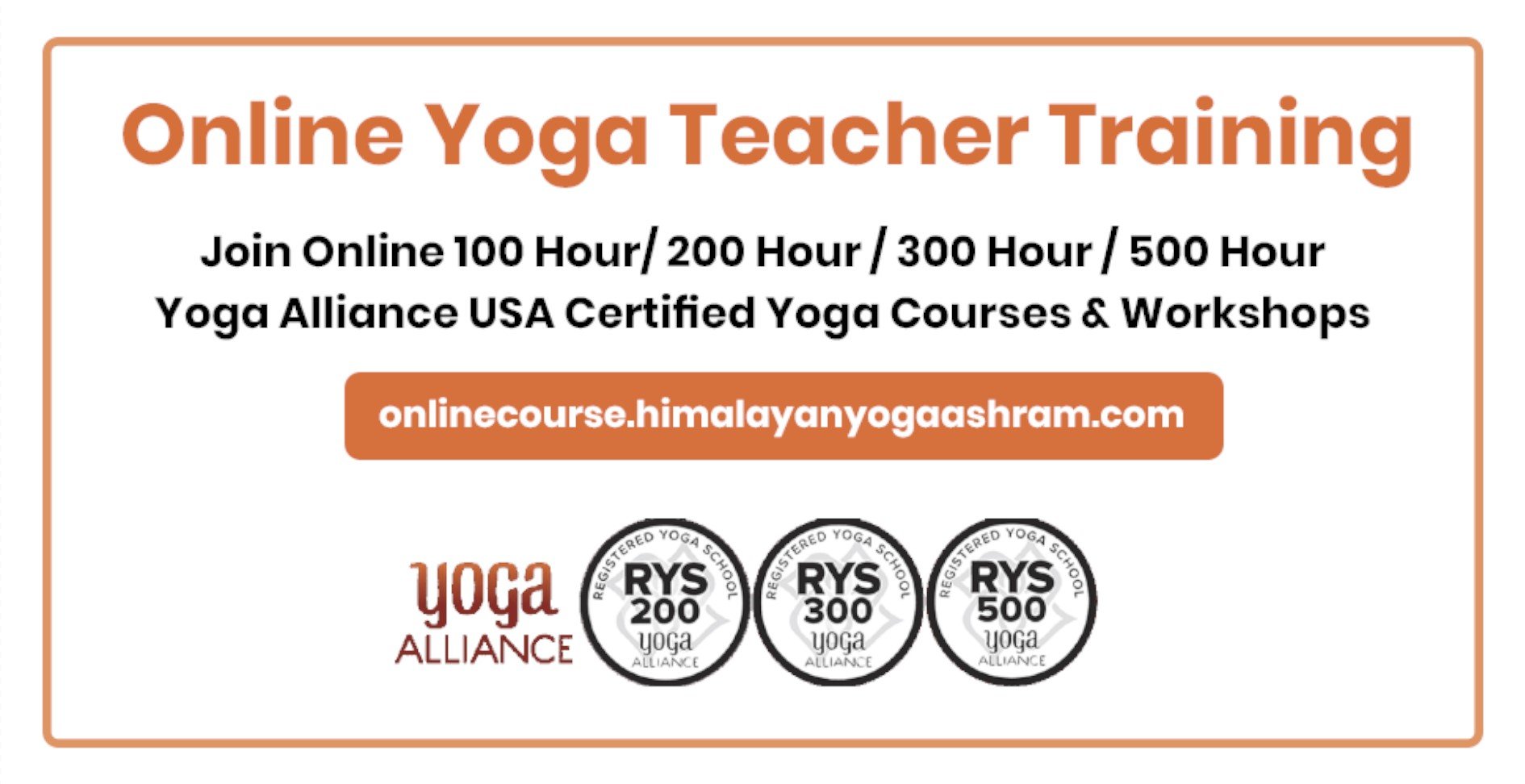Coronavirus (COVID-19) Disease | Symptoms | Updated Yoga | Cure | Treatments
By Himanshu JoshiYogaCoronavirus (COVID-19)
Are you anxious and worried about the new, sudden, emerging threat that is the most underlying concern these days – the outbreak of Covid-19? Don’t get let down by it . You can counter the issue with proper precautions and the correct knowledge of the ailment including its signs and symptoms and other details. Read on to find more :
Corononavirus ( CoV) is a fatal group of disease causing viruses that may range from common cold to other more severe forms like Middle East Respiratory Syndrome (MERS-CoV) and Severe Acute Respiratory Syndrome (SARS-CoV).
WHO.int for latest news and updates related to coronavirus
LIVE Coronavirus Effect and deaths in the world
Lates Updates Twitter #coronavirus | Google Coronavirus News
Virus from animals
The Coronavirus is considered zoonotic , which means that the virus is transmitted among animals and humans. As per detailed investigations, it has been found that SARS-CoV was disseminated from civet cats while MERS-CoV was transmitted from among dromedary camels to the people. There are several known coronaviruses that have been circulating among the animals and through which humans remain unaffected so far.
Common signs
The common signs of this virus being infected in humans include cough and fever , breathing difficulties, respiratory symptoms, and shortness of breath. The severe cases may extend to pneumonia, kidney failure, severe acute respiratory syndrome, and also cause death.
Standard recommendations
In order to prevent the infection from spreading , it is recommended to wash hands regularly, cover nose and mouth when you cough or sneeze and cook any meat items or eggs thoroughly. Also close contact is to be avoided with anyone who shows any symptoms like coughing, sneezing related to respiratory illness .
Origin of the Noval Coronavirus (COVID-19)
The new coronavirus originates from Hubei Province, China . The disease as a consequence of the virus is called COVID-19.
How the Noval Coronavirus spreads
The most probable case of COVID-19 spre ading from one person to another is via :
- Direct contact with the infected patient or within the span of 24 hours before the appearance of symptoms.
- Intimate contact with the person infected who is coughing or sneezing
- Touching or coming in direct contact with certain surfaces of objects such as tables , door knobs or handles that have been contaminated due to coughing or sneezing by the person infected and thereafter touching your own face or mouth.
Symptoms
The Symptoms related to coronavirus share their similarity with other flus and colds which include:
- Cough
- Fever
- Sore throat
- Difficulty breathing
- Fatigue
Some of the infected people may not fall sick while some others may experience mild symptoms and show easy recovery. Again others may suffer from serious illness.
Who is at risk
Those who have high chances of the risk of contracting the virus include people who have :
- Travelled abroad recently, and to the high risk nations in particular.
- Stayed in close contact with the infected person having confirmed COVID-19.
Prevention
The best way to prevent the virus from spreading or defend yourself against it is by practicing hygiene particularly following hand hygiene and cough and sneeze hygiene and keeping good distance from those who are sick or if you happen to fall ill. In addition, it is important for you to:
- Keep hands washed regularly using soap and water, before and post meals and also after toilet visits -cover your mouth while coughing and sneezing
- Disposing used tissues,
- Using hand sanitizers that are alcohol-based
- Keep away from others if feeling unwell.
- Be wearing surgical masks which may just help prevent the COVID-19 from spreading by those already infected by it. There is lesser evidence that supports the significant role of surgical masks used by the healthier population to avoid the virus transmission.
- In confirmed cases the infected person must isolate himself from others so as to avoid the spreading of the infection.
Testing and diagnosis
In case you feel unwell and doubt the symptoms of coronavirus, then an immediate medical examination becomes necessary.
- The doctor may recommend testing on the basis of the criteria given:
- You have come back from an overseas trip in fourteen days before feeling ill.
- You have been in intimate or a casual contact with a case of confirmed COVID-19 in fourteen days prior to feeling ill.
- You are suffering from respiratory issues such as cough, shortness of breath,sore throat and are having or not having any fever.
- You are suffering from severe case of pneumonia that is community acquired and no other reasons for it is evident or clear , whether you have recently travelled overseas or not.
- For healthcare workers who are prone to direct contact with the patients and with the symptoms of fever (@≥37.5) , severe respiratory infection such as cough , sore throat,shortness of breath. In such cases, call immediately and book appointment with the doctor. Inform him about the symptoms, history of travel and any close contact which you may have made with an infected person.
- Wearing a surgical mask is important while leaving the confines of your home so as to be able to prevent any spread of infection to others.
- For other more severe symptoms like breathing difficulties seek medical treatment immediately.
Treatment
Coronavirus does not have any kind of treatment as such, however with proper medical care,most of the symptoms can be treated. Antibiotics are not effective enough for viruses.
In case of being diagnosed with coronavirus , it becomes necessary to keep yourself isolated at your home .
How to keep yourself isolated
- You can keep yourself isolated by avoiding public places like school and work, shopping malls , university or childcare. See if you can possibly arrange for food and other essential items to be delivered at your doorstep
- Excepting for families living together, do not allow any outsiders at this time
- It is not necessary to wear masks while at home
- If at all there arises the case to leave your home for seeking medical treatment, you should then wear the surgical mask so that others can be protected
Coronavirus – history
It was in the 1960s that the human coronaviruses, was characterized initially, accountable for infections of the upper respiratory tract among children . A minimum of 5 new of the human coronaviruses were recognised that were responsible for significant cases of mortality and morbidity. The viruses identified show a relation to the respiratory disease of the upper and lower tract . The virus has shown a significant advancement since the past few years.
Countries under the impact of Coronavirus
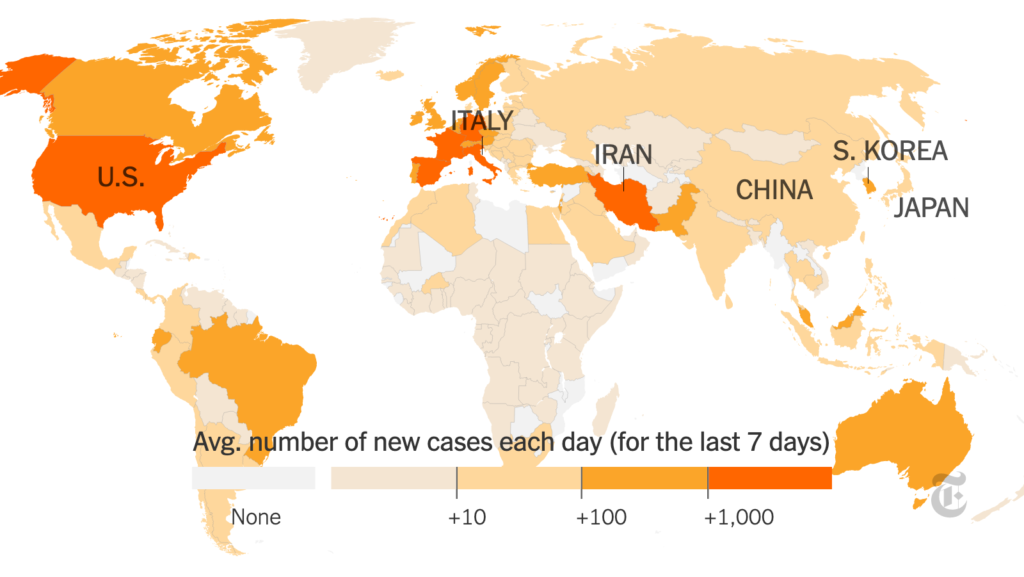
The novel coronavirus (2019-nCoV), named officially by COVID-19 under the World Health Organisation (WHO) has been multiplying to multiple countries which exceeds 120 nations that includes China which has been prompting the World Health Organisation to announce the ailment as a global epidemic. The confirmed cases of the novel coronavirus have exceeded an alarming number of 140,000, with above 5,000 deaths being reported across the globe while Europe emerges as the new addition of the affected nations affected with coronavirus. Currently, above one-third of the cases of COVID-19 have been reported outside China.
Declaration of COVID-19 as a global pandemic
On the 11th of March, the outbreak of COVID-19 had been declared to be a global pandemic. The same outbreak was also declared by the US in the form of a public health emergency on the 1st of February while imposing a temporary ban on travel between the nations of Europe to America.
Research on vaccine and drugs
Vaccines and drugs are been worked upon by pharmacy companies like Gilead Sciences, Inovio, Abbvie and research is also being carried out regarding the same in China.
Most affected economies by coronavirus
As per preliminary estimates by UNCTAD of the impact of the virus on trade and economy, those nations that have been impacted most economically on account of the coronavirus include : Vietnam, Taiwan, South Korea, Japan, US and European Union.
Confirmed cases and deaths due to Global Coronavirus (As per update on March 12, 2020)
The Novel 2019 Coronavirus ( Covid-19) , so far is reported to have claimed above 4000 lives on a global level with 3169 deaths reported in China. Outside China, there have been reported deaths in 28 countries.
How the virus began
The virus is reported to have originated in Wuhan, China . The 10th of December was the day when a 57 –year old seafood merchant – Wei Guixan , in the Hua’nan market located in this city, initially began feeling sick. With the thought that she might have caught a cold, she visited a small clinic in the locality for medical help and thereafter resumed work. After 8 days, her condition, barely conscious , she was in the hospital. The case is one such case that had been first suspected of coronavirus which today has left China paralysed and adversely affected the economy of the globe as well. The virus continuing to spread across the globe, has left above 100,000 ill.
Cases affected by Coronavirus
There have been above 164,000 cases that have been globally documented which includes celebrities and sports persons, government officials, as the world continues to counter the spread of the fatal disease.
Cancellation of events due to coronavirus
Major events around the world are being cancelled on account of the spread of Coronavirus, such as the annual Met Gala – which has been stated as the biggest fashion night , has been confined to an indefinite postponement as per Metropolitan Museum of Art.
Celebrities infected by Coronavirus
Prominent among the top popular celebrities are the talented actor of Hollywood -Tom Hanks and his wife, Rita Wilson – singer and actress, Idris Elba- the British actor and Sophie Trudeau who is the better half of Justin Trudeau ,the Prime Minister of Canada, who have been infected by the fatal virus, as strict government measures continue to be taken to curb coronavirus.
Coronavirus: Are women and children less affected?
As compared to men, the probability of death due to coronavirus in case of women is lesser , and as compared to other age groups, the probability of children dying from the virus is lesser.
Most of the affected population are prone to mild infection, however there is a clear pattern in the cases that are most severe.
The research has been conducted under a massive study undertaken through Chinese Centres of Disease Control which has taken under study of 44,000 people while showing death of men infected as 2,8 per cent of the total men infected as compared to women which is 1.7% of the population of women.
And compared to nearly 15 % of those aged 80, the death among children and teenagers comprised of 2% of them.
What coronavirus does to the body
One may be wondering how the virus actually attacks the body , why it is killing some and how it can be treated. Here is a brief on the same:
Incubation period
- This is the phase of the establishment of the virus.
- The viruses operate by entering the cells within the human body that it is made of and then the body gets hijacked by it.
- The body can be invaded by coronavirus, while inhaling (for example when someone nearby coughs) or if you happen to touch a surface that is contaminated and then you touch your face.
- During this early stage, one may not get sick or even not develop any symptoms.
- The incubation period,( the phase between the infection and the initial appearing symptoms) may vary widely, however spans on an average of 5 days.
Mild disease
- Most of the infected population will be experiencing a form of mild disease. It has been found that among 10 people, 8 of them get the infection , the core symptoms being cough and fever.
- The other possibilities include sore throat, headache and body aches, however there is no guarantee of the same.
- The fever is a consequence of the response of the immune system to the infection. It recognises the virus invasion and signals the other parts of the body that there is something wrong via chemicals released known as cytokines. The cough that is caused by the coronavirus is originally one that is dry. Some people eventually begin to cough sputum which is a thick mucus that contains dead cells of lungs which the virus kills.
- At this stage, the symptoms related to coronavirus can be treated through paracetamol, abundant fluids and bed rest.
- This stage stays for about one week when most may recover as the immune system fights off the virus. But, Covid-19 may take a serious form of development in some.
- This represents the best of what has been understood at this stage, though other emerging studies suggest this form of disease causing symptoms that are more cold-like for example runny nose and so on.
Is the fear of Coronavirus stressing you out? Yoga can be of help in such a situation.
‘Yoga’ as a word finds its origin from the word ‘Yuj’ which is a Sanskrit word that indicates ‘joining’ or ‘uniting.
Yoga , as a practice is said to have marked its beginning ever since the very first light of civilisation. Yoga, as a science dates back to more than thousand years ago, even prior to the birth of religion or established systems of beliefs. Lord Shiva is considered as the first Guru and yogi as per the yogic lore.
The concept of yoga in reality is much vast than you may assume. In other words , yoga is not just about physical exercising but goes over and above just the asanas to connecting the self with the divine. The regular or routine practice of yoga is said to awaken your spirituality and refresh your mind, body and soul. Following this concept , yoga studios and schools such as Himalayan Yoga Association (HYA) located in the “Yoga Capital of the World “- Rishikesh, India, encourage mindfulness and healthy daily regimen for a healthy yogic lifestyle. This includes inculcating discipline such as sleeping and waking up on time, following the healthy vegetarian sattvic diet to nourish the body and practicing yoga and meditation regularly.
Yoga Practice for Health and Wellness:
According to Shri Himanshu Joshi – yoga teacher and founder of HYA, Rishikesh, India, some of the yoga sadhanas or practices that are widely practiced include: Asanas, yama and niyama, pranayama , dhyana or meditation, Mudras and Bandhas, Samadhi , Dharana, Pratyahara, Shar-karmas or cleansing rituals. These form the pre-requisites for the practice of yoga or yoga sadhana. And if you are wondering how asanas can help , here’s more about the role of asanas:
Asanas, have the power to bring the body and mind to a state of stability. It entails the adoption of the various psycho-physical patterns, and adds to the capability of the individual of maintaining a body position upto a certain length of time.
So,let some asanas, breathing techniques and the goodness of Ayurveda play their role to keep you calm, give you sound sleep and strengthen the body’s immune system.
So as of now, you may be getting asked to stay home if you happen to sneeze or cough or be stared upon by suspicious eyes if doing the same at the subway. You may also have noticed pantries getting stocked with Purell and rolls of tissues. And you are already into the cautionary mode , washing hands every now and then, being home when ill and keeping a good distance from those sneezing or coughing.
The number of cases of infections are likely expected to rise in the U.S. However, the stress and anxiety added with anticipation, fear and uncertainty may create further havoc and have adverse effect in health. Here Ayurveda, Yoga and mindfulness play a handy role in helping to fortify the body so as to be able to fight off flu, common cold and coronavirus. Keeping a healthy immune system and low levels of stress become essential factors. Ayurvedic practitioners and other experts recommend some helpful tips in this regard so as to remain healthy:
Here’s what you can do to boost your immune system:
- Gargling of warm saltwater : using a neti pot. Dissolve around half teaspoon of sea salt or Himalayan salt in warm water which is 8 oz. In your attempt to avoid any sickness , your nose and throat may have bacteria and germs hanging out before they actually enter the blood stream and then affect the immunity. Salt helps to cleanse them out. These rinses entailing saltwater can be used as measures of prevention or if you begin to get the feeling of sickness.
- Sleeping well : According to Ayurveda, a sleep cylcle that is balanced is linked directly to a healthy and strong immune system. It is advisable to go to bed after 2-3 hours post sunset so as to maintain the healthy sleep routines.
- Drinking tulsi tea. : Tulsi – one of the sacred Ayurvedic plants is a good reducing agent of headache, stress and fever . Just carry this handy herb with you wherever you go , be it work or school. Tulsi has soothing properties to counter the respiratory conditions that maybe problematic.
- Supplement : Turmeric acts as a natural herb that supplements the body’s immunity.
- Deep breathing : The lungs are considered as the largest lymph pumps, that clears the toxins from the body. A regular practice of pranayama can aid in busting stress and enhance immunity. Some breathing exercises help open the lungs, such as ‘Anulom Vilom,’ ‘Kapalabhati’, ‘Ujjayi Pranayama,’ ‘Sitali Pranayama.
- Massage or self-massage : A daily self-massage or abhyanga is beneficial while using organic oils example sesame oil or coconut or olive oil which help hydrate and nourish the skin and calm the nerves. This acts as a preventive measure .
- Taking vata-balancing breaks in course of the day : To avoid getting stressed, just give yourself a few minutes (20 minutes ideally) to spend in mindfulness practices , quiet sitting, walks ,or Restorative Yoga, particularly after a hard day ’s work , towards the day end.
Yoga Asanas
Twisting and bending while doing postures strengthens the lymphatic system. It is essential to expel the secretions present in the body from the from lymph glands .
Here are some helpful asanas:
- Shashankasan – In a seated posture, the lymph toxins get drained out from the body via forward bending and the immunity improves.
- Padahastana – While standing, the lymph toxins get expelled from the body through forward bending and circulation gets enhanced.
- Paschimottanasana – In a similar manner, paschimottanasans helps in expanding chest posteriorly.
- Sarvangasana – In the supine posture, the legs and body are to be raised upwards till the region of the shoulder . This eliminates the toxins of the lower limb from the body while reducing pressure on the lower body.
- Matsyasana – The Matsasana or fish pose is done after Saravangasana. This pose works in the form of complementary posture bringing in the equanimity. It also looks into the other regions of the body such as neck.
- Dhanurasana – While you lie on the abdomen, ( prone posture), twist both your hands and legs backward, in a manner that resembles the body similar to a bow.
- Similarly the asanas of backward bending such as Ushtrasana (camel pose), bhujangasana (snake pose),enhance the elasticity, volume and strength of muscles and chest cavity .
Shuddhi kriya
Jala neti –This is an effective cleansing technique that aids in the cleansing of the the respiratory pathway, and helps the body to get rid of bacterial infections and viruses. Salt water helps improve breathing post oxygenation. Kapalbhati (breathing involving forceful exhalation ) should be done after Jalaneti in order to remove the stagnated water present in the sinuses.
Vamandhauti – Vaman Dhauti is a part of the Shatkarma or Shatkriya. Devised by yogis , this practice systematically cleans the alimentary canal. It mainly intends to cleanse the digestive track and effects the hygiene of the eyes , external ears and respiratory tract.
Pranayama
Pranayama is a systematic technique that involves the control of the breath and mind. It aids in enhancing and repairing the body’s respiratory functioning and enhances the efficiency of the neuroendocrine mechanism. It should be performed under expert guidance (two times a day with ten to twenty rounds)
These include:
Anulom vilom pranayama – Anulom Vilom Pranayama or “Alternate Nostril Breathing” helps in cleansing the energy channels within and the respiratory system. It also helps in balancing and channelizing the neuroendocrine functions, and thus aids in enhancing the body’s immunity.
Suryabhedan Pranayama – this technique entails the breathing in of the right nostril and the breathing out of the left nostril .
Bhastrika – This involves a procedure of vigorous inhaling and exhaling. It may be noted that pranayama practices such as Sheetali and Sitkari which have cool effects , are to be avoided.
Meditation
So if you have been facing increased anxiety recently on account of the these days due to the Covid-19 coronavirus, you aren’t the only one! The pandemic has left one and all to face greater stress and left the situation to uncertainty. It has also been questioning us as to how or what can be done to prevent the panic and anxiety.
In our attempt to overcome this anxiety due to the coronavirus, a motivational quote can be kept in mind , “With the new day comes new strength and new thoughts. …” And meditation gives you that strength and positive thinking to carry on.
Role of meditation
The first thing to understand is that “meditation” in reality relates to several practices. For example in the west, it is referred to as “mindfulness meditation.” This denotes focusing non-judgementally and purposefully on your present. It may entail a formal mode of practice such as while sitting when you just close your eyes and concentrate on the breath going in and out. Mindfulness can also be practiced during other activities such as while shopping for groceries or reading the news and so on.
How mindfulness and other techniques of meditation can help in finding balance during the pandemic :
As per the studies conducted under neuroscience , it has been found that the art of meditating plays a role in controlling the emotions that let go of altruism. The power of meditation helps us remain at ease within a space of presence large enough to fit in what whatever we face. It is this space that lets us live in reality from the individual being we intend to be.
To know more about yoga and meditation and spiritualism you can read some enlightening books such as “Yoga Sutras of Patanjali,” “Bhagavad Gita,” and more that will also calm your mind, body and soul. These popular texts are also recommended by yoga gurus and yoga schools worldwide.
Harvard Medical School recommending yoga to cope with the threat of Coronavirus
In the outburst of the pandemic, the Harvard Medical School as per its latest guideline on health has recommended yoga, meditation and controlled breathing as some of the beneficial ways to bring relaxation to self through an article ‘Coping with coronavirus anxiety.’
Even if yoga is not your cup of tea, consider trying it out as something new and find out how it benefits you as a form of healthy distraction!
Practicing yoga under expert guidance of a professional yoga instructor is the best way to acquaint and learn the principles and philosophy of the subject. A qualified yoga instructor will guide you on how to perform the asanas correctly, how to avoid injuries while performing them and the correct breathing techniques along with precautionary measures to be taken . Once you master these, you will be able to practice the same with confidence and teach it to others too.
So practice yoga, pray to your divine force and stay positive . Do take the essential precautionary measures to shield yourself from ailments ranging from cough and cold, flu, fever to COVID 19. It is hope , prayer and positivity that can motivate us and the world to keep the fight against this current pandemic going and win over it.
References:
https://www.health.gov.au/health-topics/novel-coronavirus-2019-ncov
https://www.bbc.com/news/health-51774777
https://www.bbc.com/news/health-51214864
https://www.wsj.com/articles/how-it-all-started-chinas-early-coronavirus-missteps-11583508932
https://www.cdc.gov/coronavirus/2019-ncov/faq.html
https://www.yogajournal.com/lifestyle/ayurveda-and-yoga-for-flu-and-coronavirus
https://journals.lww.com/pidj/fulltext/2005/11001/history_and_recent_advances_in_coronavirus.12.aspx

